Proposal
Our proposal is to make a tower defence game based on defending bacteria taken on our middle and high school years. The objective is to defeat the bacteria and try not to get hit by one of them cause that will cause the defender to lose control of defending the bacteria and gain upgrades as soon as the bacteria gets killed.
Objective
- Use Game Sprites and UI
- Make the game educational and challenge
- Facts that describes the body immune system
Overview
Before making the game, we’ve decided to make the game based on immune system. The immune system is the body’s defense against infectious organisms and other invaders. Leukocytes are produced or stored in many locations in the body, including the thymus, spleen, and bone marrow. Divided into two: Phagocytes, cells that chew up invading organisms. Lymphocytes, cells that allow the body to remember and recognise previous invaders and help the body destroy them. It has disorders which damages the immune systems based on the game, it reduces the game’s health by one. In the game, we use turrets to fight against the diseases on which one of the turret is good against.
Teams:
- Alfi (2101693574)
- Handy (2101693504)
- Felix (2101693851)
Theory
Has 2 T cells that helps to fight the bacteria: Helper T cell and Cytotoxic T cells. Helper T cell activates humoral and cell-mediated immune responses. Cytotoxic T cells use toxic proteins to kill cells infected by viruses or other intracellular pathogens before pathogens fully mature.
Immune Responses divides into Primary and Secondary immune responses. Memory cells of each type—helper T cell, B cell, and cytotoxic T cell—enable the secondary response.
When antigens are detected, several types of cells work together to recognise them and respond. B-lymphocytes to produce antibodies, which are specialized proteins that lock onto specific antigens. After it produced it prepares to fight for the upcoming diseases.
There are the following disorders as mentioned below:
Autoimmune disorders consists of:
– Rheumatoid arthritis
– Systemic lupus erythematosus (lupus)
– Inflammatory bowel disease (IBD)
– Type 1 diabetes mellitus
– Chronic inflammatory demyelinating polyneuropathy
– Psoriasis
– Graves’ disease
– Hashimoto’s thyroiditis
– Myasthenia gravis
– Vasculitis
Immunodeficiency Disorders consists of:
– DiGeorge syndrome
– Chediak-Higashi syndrome and chronic granulomatous disease
Secondary immunodeficiency Disorders
– HIV (human immunodeficiency virus) infection/AIDS (acquired immunodeficiency syndrome)
Allergic Disorders consists of
– Asthma
– Eczema
– Cancer
Bacteria list
– Mycobacterium
– Pseudomonas
– Haemophilus
– Stapylococcus
– Gut Flora
– Campylobacter
Treatment
– Autoimmune diseases: Only treated by controlling the overactive immune response and bring down inflammation. E.g.: Nonsteroidal anti-inflammatory drugs (NSAIDs) such as ibuprofen (Motrin, Advil) and naproxen (Naprosyn).
– Secondary diseases: The treatment depends on the severity in the deficiency of the immune system.
– Immunodeficiency disorders: Antimicrobial therapy to fight and prevent infections, immune globulin replacement therapy, vaccinations, specialized immune globulins, hematopoietic cell transplant, gene therapy, enzyme replacement therapy, biologics.
– Allergic disorders: Depends on each bacteria.
How they fight against pathogens
– Neutrophils kill bacteria by ingesting them.
– Eosinophlic fights parasites and has a role in allergic reactions.
– Basophil fights in allergic reactions.
– Monocytes ingests bacteria throughout the body. Cells destroy damaged and dead cells.
Game Mechanism
We have our tower defence game, which the goal is to defend the immune system from the invading bacteria. Going into the title screen we can see the start and the about button, start button starts the game and the about button shows the facts about the immune systems. On the menu screen, the HUD screen display the wave, health, the point and the background shows one of the places that the tower can be placed, the path for the invading bacteria and the purple square shows the bacteria coming to invade the body. The turret below shows that it cost one point to place for the later waves.
During the gameplay we first go through the menu, start and about. Start goes to the main game while about goes to the facts of the immune system. The controls for moving the turret is the mouse, and navigation is also used to upgrade and move the turrets. Start at wave 1 the bacteria will go through the turrets and the turrets will automatically shoot. When the wave is cleared, the player can ready up anytime whether he/she wants to upgrade the turret or not. After that, it loops from before and vice versa. Game over when all the lifes are gone.
Conclusion
We know how to make games using construct 2 by using those sprites by making our own via MediBangPaintPro. Also, we know how to handle the events by controlling the sprites and other backgrounds and buttons.
Source
https://www.healthline.com/health/autoimmune-disorders#treatment https://www.historyofvaccines.org/content/articles/human-immune-system-and-infectious-disease https://www.urmc.rochester.edu/encyclopedia/content.aspx?ContentID=123&ContentTypeID=134 http://www.superfoodsam.com/super-gut/ https://www.betterhealth.vic.gov.au/health/ConditionsAndTreatments/infections-bacterial-and-viral https://www.immunology.org/public-information/bitesized-immunology/pathogens-and-disease/immune-responses-bacteria https://www.businessinsider.com/microbiome-human-bacteria-gut-intestine-mouth-skin-2015-11/?IR=T/#genus-escherichia-4 https://www.google.co.id/search?q=myositis+bacteria&safe=strict&source=lnms&tbm=isch&sa=X&ved=0ahUKEwiqsd_euvjdAhVBO48KHXk_B4QQ_AUIDigB&biw=1018&bih=677#imgrc=fSRGhTF39e3-OM: https://kidshealth.org/en/parents/immune.html https://www.webmd.com/a-to-z-guides/autoimmune-diseases https://www.sciencedaily.com/releases/2010/06/100614171907.htm https://www.sciencedaily.com/releases/2017/11/171116142058.htm http://allerg.qc.ca/Information_allergique/6_2_secondaire_en.html https://primaryimmune.org/allergies-4 https://www.cancer.gov/about-cancer/treatment/types/immunotherapy https://www.sharecare.com/health/blood-basics/how-white-blood-cells-infection Campbell Biology (2016) Lisa A. Urry, Micahel L.Cain, Steven A.Wasserman, Peter V. Minorsky, Jane B. Reece Unit 7 Chapter 43 Construct 2 and MediabangPaintPro
Screenshots:

Main menu background

About background that shows the info when it runs
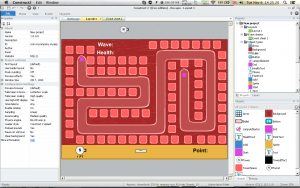
Game background

From screenshot 4-21

















The screenshot for 2nd event shows the buttons for the menu

The screenshot for 3rd event shows the about menu

P.S. Unfortunately, i can’t run the game due to localhost problems (don’t know how to solve it because i tried searching for the problem but it doesn’t work for mac users)

Game over screen
• Proposal
Our proposal for the final project is to define the cheapest way of travelling to a destination. Using one of the programming languages, we analyse which algorithm is suitable for finding the destination.
• Introduction
– Background
The final project of analysis of algorithm the choices we choose is finding a cheapest way or shortest path of finding a destination by using minimum spanning tree algorithms. Prim’s and Kruskal’s algorithm work different although it works the same In Kruskal’s algorithm it begins with an edge, select an edge in increasing order and works in connected and disconnected graph. While Prim’s algorithm starts with a node, edge moves from one node to another and restricted on connected graph
– Problem Description
Find the minimum spanning tree of the cheapest way of finding a destination from the dataset. The dataset we use a TV network route to find the shortest way of finding it.
• Related Work
The MST of Prim’s and Kruskal’s Algorithm that we use to solve the problem is similar to the shortest path by using Dijkstra’s and Bellman’s Ford algorithm.
• Implementation
− Formal description of the problem
We will use two algorithm’s: Prim’s and Kruskal’s to find out the minimum spanning tree using a dataset to connect every tv in the city so that once the network get interrupted the program could cut the connection a problem and get a minimum cost weighted perfect matching.
− Design of Algorithm

− Proof of Correctness
The algorithm can’t check when the result is out of range or when the file is not found while running the program.
– Complexity analysis
Vertices: 25
Edges: 600
Time Complexity by using large data:
Undirected GraphsΘ(E Log V) : 69.45 seconds
Prim’s AlgorithmΘ(V log E) : 838.76 seconds
Kruskal’s Algorithm(E log E) : 1666.89 seconds
Space Complexity by using large data:
Undirected GraphsΘ(E Log V) : 625 seconds
Prim’s AlgorithmΘ(V log E) : 625 seconds
Kruskal’s Algorithm(E log E) : 625 seconds
• Evaluation
− Theoretical analysis of the algorithms
While running the program, the result from the theoretical algorithm differs from the complexity analysis. Because the theoretical algorithm uses the real life time of finding a large data compare to running it in a program.
− Implementation Details
Finding the MST of Prim’s and Kruskal’s Algorithm.
− Data Sets
The Data Sets is using all the possible TV network route(KM) of all the city in Indonesia.
− Experimental Analysis
It runs well without an error and shows the complete algorithm of Kruskal’s and Prim’s.
− Results
There are two option you can choose between Kruskal’s or Prim’s. There will be two different results which both of them have their own unique results. The results is graph which find the lowest minimum cost for the chosen option.The third option shows the undirected graph which shows the default graph of the datasets.
• Discussion
We choose Transjakarta as the first choice by using the shortest path but then, we get to choose MST because many people experiencing a trouble for their TV that wont connect to the network.
• Conclusion and Recommendation
In conclusion, we know how to solve the MST and how we get the idea of implementing the algorithm. It’s based on TV network route cable that shows MST to find the best route.
• Program execution:
Code of the main file
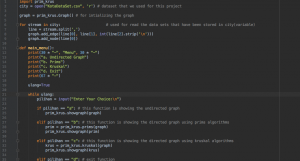
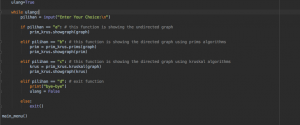
Code of the MST Algorithms







CSV of the TV network route cable












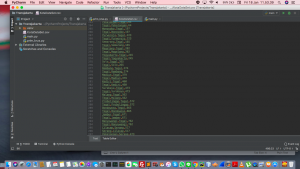
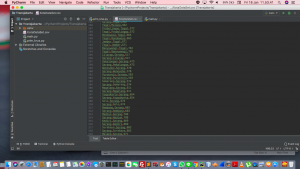
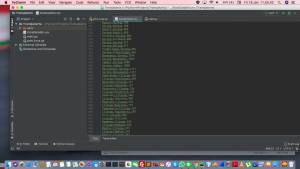
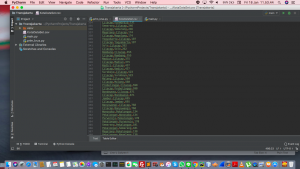
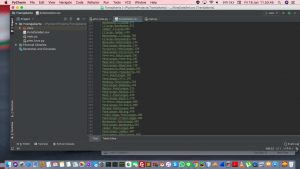
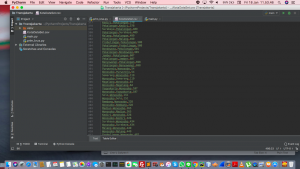
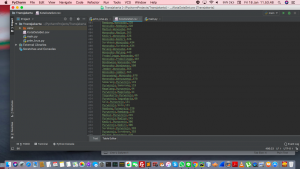
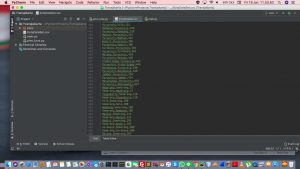
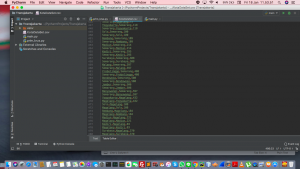
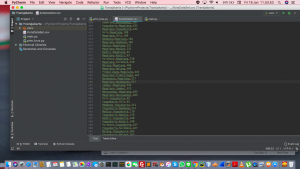
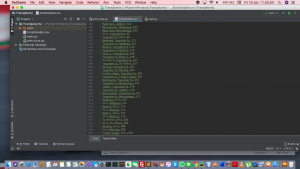
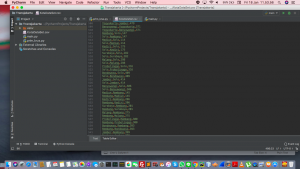
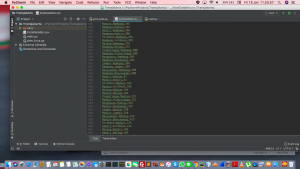
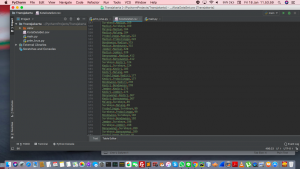
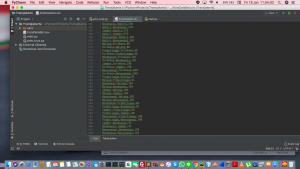
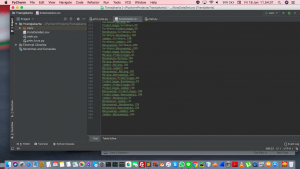
Choose between the four choices to solve the problem: Undirected graph, Prim’s, Kruskal’s or Exit to end the program

By Choosing Undirected Graph

By Choosing Prim’s Algorithm

By Choosing Kruskal’s Algorithm

• Demo application:
• Git Website:
https://github.com/FarizGaharu/Analysis_of_Algorithm_FP
• References:
Siva, Vivek. “Minimum Spanning Tree Tutorials & Notes | Algorithms.” HackerEarth Blog, 2012, www.hackerearth.com/practice/algorithms/graphs/minimum-spanning-tree/tutorial/.
Alinds Transport. “Informasi / Table Jarak antar Kota di Jawa”.Sewamobiljogja,2002,
www.sewamobiljogja.info/informasi-table-jarak-antar-kota-di-jawa.
Members
- Jason Erniody(2101693510)
- Fariz Ihsan Yasid(2101677091)
- Alfi Mohamed Redzwan(2101693574)
Recent Comments